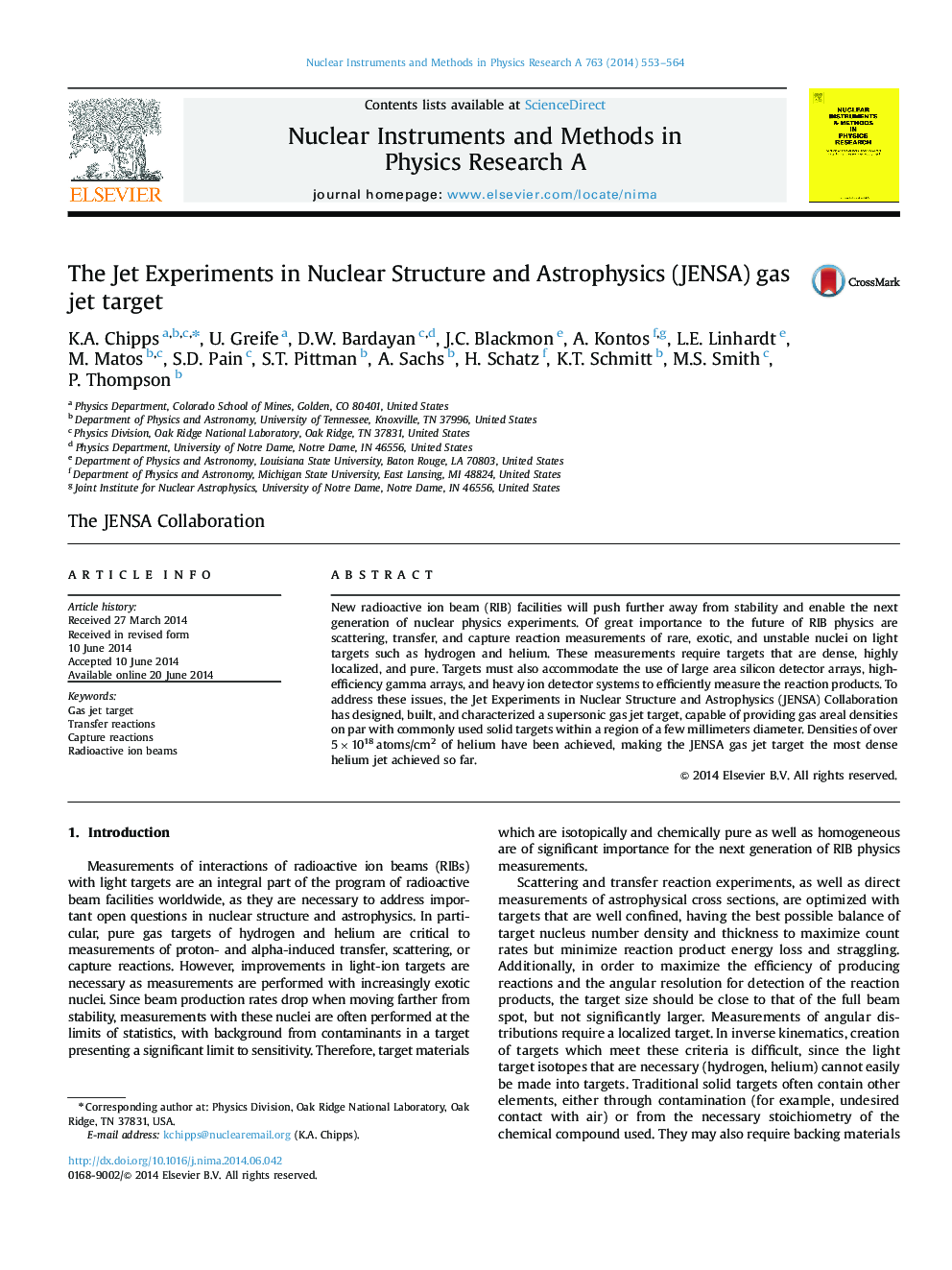| Article ID | Journal | Published Year | Pages | File Type |
|---|---|---|---|---|
| 8175799 | Nuclear Instruments and Methods in Physics Research Section A: Accelerators, Spectrometers, Detectors and Associated Equipment | 2014 | 12 Pages |
Abstract
New radioactive ion beam (RIB) facilities will push further away from stability and enable the next generation of nuclear physics experiments. Of great importance to the future of RIB physics are scattering, transfer, and capture reaction measurements of rare, exotic, and unstable nuclei on light targets such as hydrogen and helium. These measurements require targets that are dense, highly localized, and pure. Targets must also accommodate the use of large area silicon detector arrays, high-efficiency gamma arrays, and heavy ion detector systems to efficiently measure the reaction products. To address these issues, the Jet Experiments in Nuclear Structure and Astrophysics (JENSA) Collaboration has designed, built, and characterized a supersonic gas jet target, capable of providing gas areal densities on par with commonly used solid targets within a region of a few millimeters diameter. Densities of over 5Ã1018Â atoms/cm2 of helium have been achieved, making the JENSA gas jet target the most dense helium jet achieved so far.
Related Topics
Physical Sciences and Engineering
Physics and Astronomy
Instrumentation
Authors
K.A. Chipps, U. Greife, D.W. Bardayan, J.C. Blackmon, A. Kontos, L.E. Linhardt, M. Matos, S.D. Pain, S.T. Pittman, A. Sachs, H. Schatz, K.T. Schmitt, M.S. Smith, P. Thompson, The JENSA Collaboration The JENSA Collaboration,
